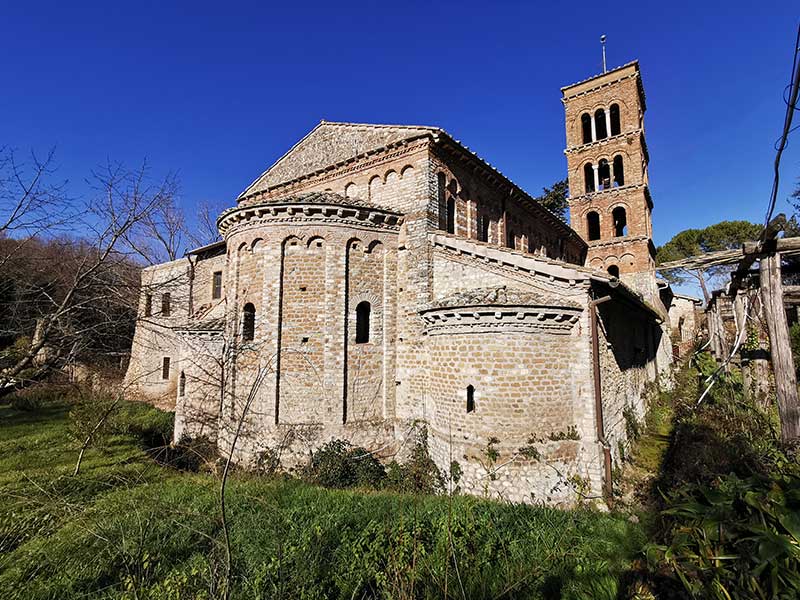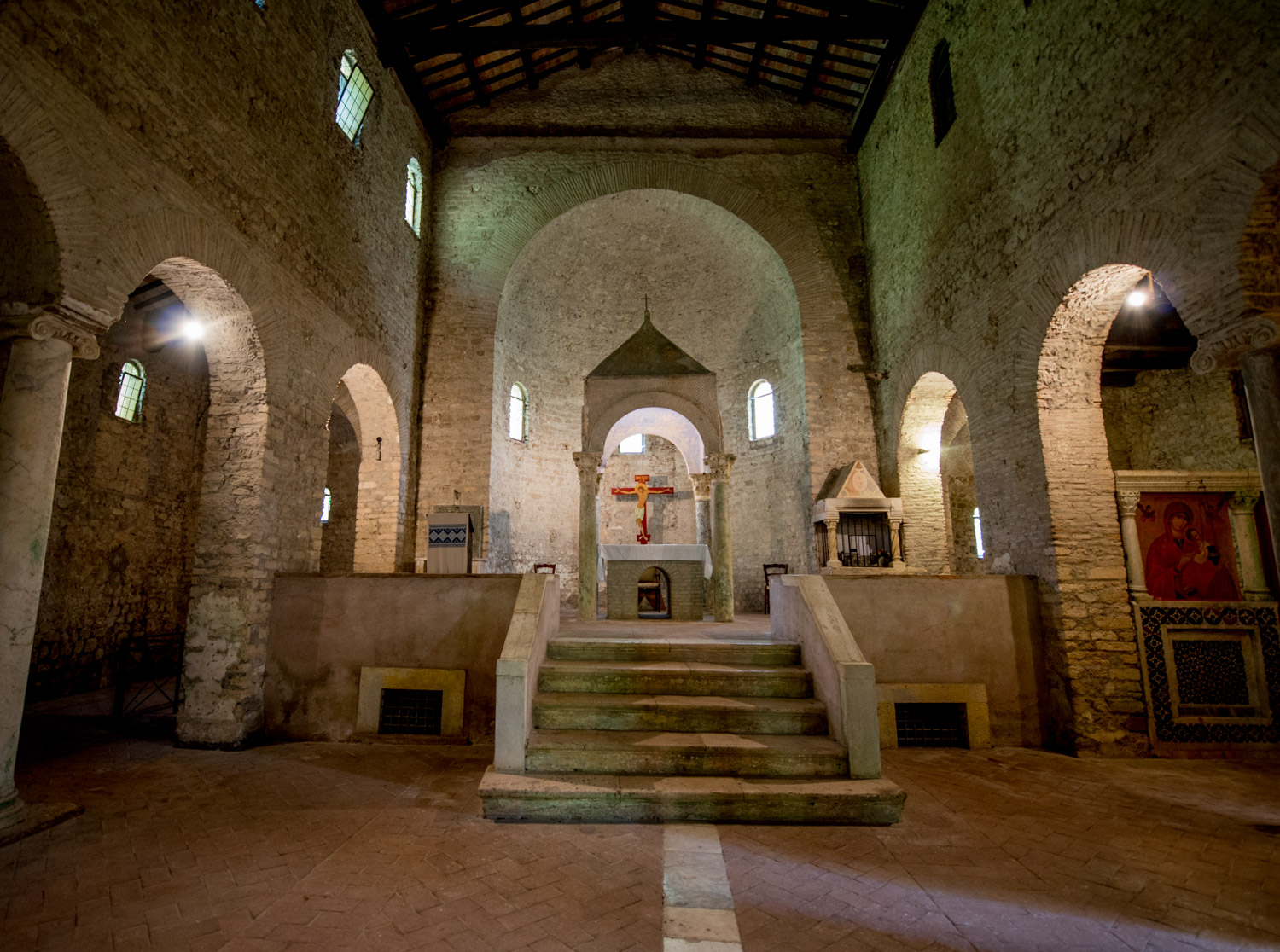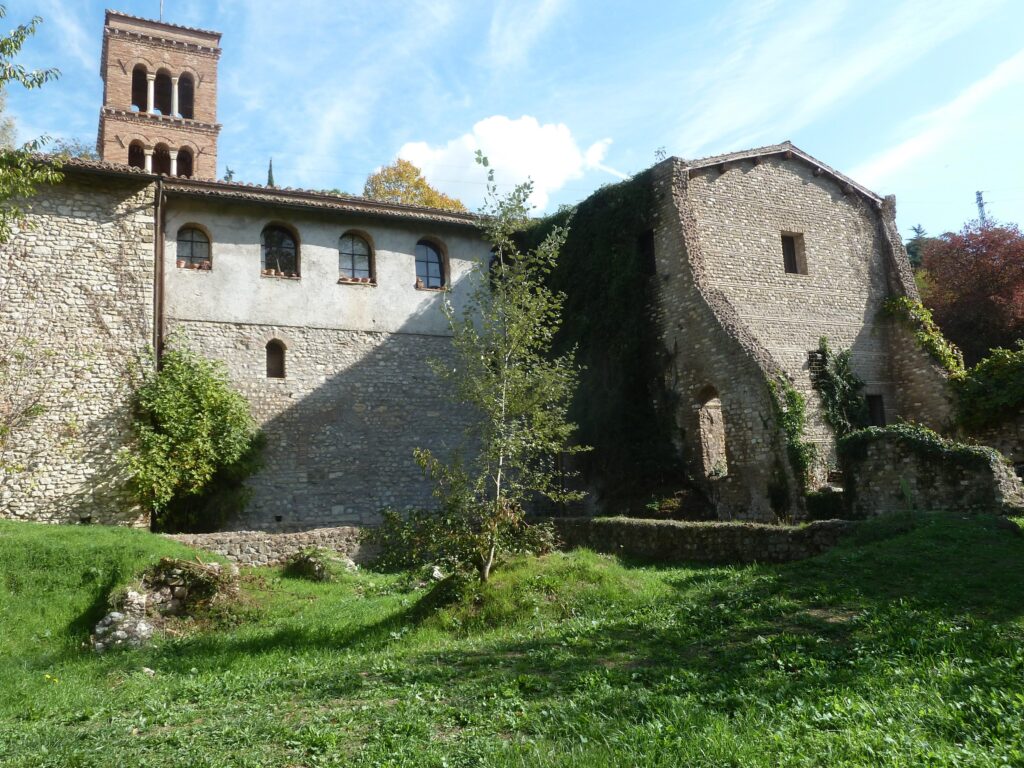Abbey of Saint John in Argentella

The church stands on the remains of a Roman building dating back to the 2nd or 1st century BC, built near a spring, which is difficult to identify today: it could be a rustic villa or a temple linked to the cult of water.

The toponym of "Argentella" itself seems to derive from the silvery reflections of the water that flowed placidly along the valley.

A primitive oratory was erected on this building, no longer visible today, dating back to the VI-VIII century and probably consecrated during the dominion of the Lombards who dedicated it to San Giovanni Battista. In the Carolingian era it probably underwent a first expansion: the fragments of the floor in opus sectile and some plutei and pillars that decorated the interior of the sacred building date back to this period.

During the twelfth century, the current Romanesque church with three naves with apse terminations was built on the primitive oratory. This was the period of maximum splendor for the abbey which coincided with the return to the monks, in 1111, of vast possessions by Count Ottaviano, lord of Palombara, of the Crescenzi family who over the course of more than a century had taken possession of numerous properties of the abbey. This was possible following the direct intervention of Pope Paschal II, determined to restore the rights of the Apostolic See to the Patrimonium Sancti Petri, thus allowing the monks to reconstitute a vast patrimony between the Sabine diocese and that of Tivoli.

Regained the properties, a period of economic prosperity followed which allowed the expansion of the church and the construction of some monastic structures including the access body to the church with the portal on which stands the coat of arms of the Benedictine order. Between this and the church there was a small atrium, closed on all four sides and perhaps a portico. Between the twelfth and thirteenth centuries. the bell tower was also raised and the works of art still kept inside the abbey were created: all this was based on the Roman choices for the decoration of the basilicas, especially that of St. Peter in the Vatican, with the clear intent programmatic to celebrate the power of the papacy and its dominance over the empire.

Cardinal Jacopo Savelli, future Pope Honorius IV, in 1286 entrusted the monastery to the Guglielmites who undertook a series of works that profoundly changed its appearance: the atrium was covered, the entrance body was raised above the right aisle a long corridor was built which connected the rooms on the façade with the monastic spaces downstream. In 1445 the Wilhelmite monks abandoned the abbey which was entrusted to commendatory abbots, thus marking its progressive and inexorable decline. In the following centuries it was inhabited by some hermits and officiated by the minor monks observing the convent of San Francesco in Palombara.

The last cardinal bishop of Sabina who ordered maintenance work was Lorenzo Litta who, visiting the abbey in 1815, found it in a state of semi-abandonment. It was only through the interest of the Bolognese painter Enea Monti that at the end of the nineteenth century the abbey returned to the center of interest of scholars and was again subjected to restoration. In 1900 the church was declared a National Monument and in 1924 the first study on Argentella was published, which was authored by Raffaele Luttazzi. This was followed by many others that shed light on the historical events of the ancient abbey: among the most important is that of Ragna Enking.

In 1969 the most recent phase of the Argentella began when the Fraternity of Saints Nicholas and Sergius was established there, born during the Second Vatican Council with the aim of bringing the Latin Church closer to the Greek Church. The Fraternity managed the monastic complex until the beginning of 2020 when it was entrusted directly to the Diocese of Sabina - Poggio Mirteto.

We hope that this is the beginning of a process of revaluation of Argentella so that it will once again be usable and appreciated by an increasing number of people.

Video: Abbey of Saint John in Argentella
Map: Abbey of Saint John in Argentella
Address: Località S. Giovanni In Argentella, 96, 00018
Palombara Sabina (RM) Lazio
Latitude: 42.055152023249875
Longitude: 12.75235891342163
Site: https://www.argentella.it/...
vCard created by: OmoGirando
Currently owned by: OmoGirando
Type: Building
Function: Monastery
Creation date: 06-10-2021 05:18
Last update: 29/01/2023